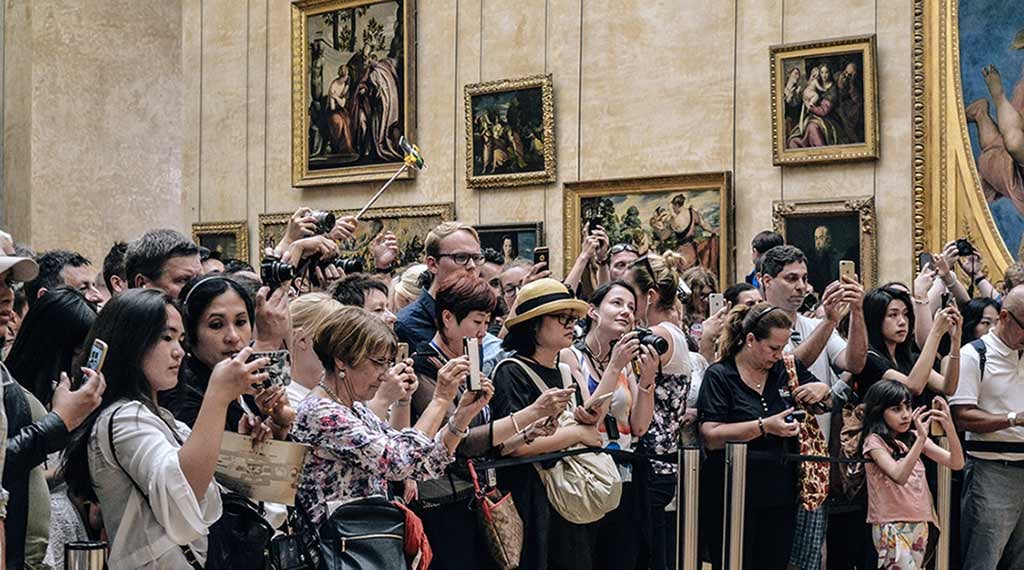
Written by Bryan Kim
With the rise of social media use through platforms like Instagram and Pinterest, images have become increasingly critical in modern marketing and communication. In fact, recent studies show that 72% of users made style purchases based on what they saw on Instagram. From toddlers to canines, Instagram “influencers” build a following through compelling visual stories pointing others to Insta-worthy destinations.
In a natural extension of social media, architecture has become intertwined with and influenced by the images and geo-tags of this generation. But while there is a risk in devaluing the profession with the out-of-context oversaturation of images, architecture itself has always depended on the image to translate from three-dimensions to two.
Below, we examine the relationship between architecture and social media through both a historic and modern lens.
Influential Architects and Their Photographers
Though architecture is driven by an experiential understanding, photography has allowed many more people to see a building without having to travel around the world. Confined by a viewpoint and field of vision, photographers can carefully curate the image to promote the embedded ideas of form and place. In a collaborative relationship, influential architects have paired with a specific photographer to further their ideals and view their own projects.
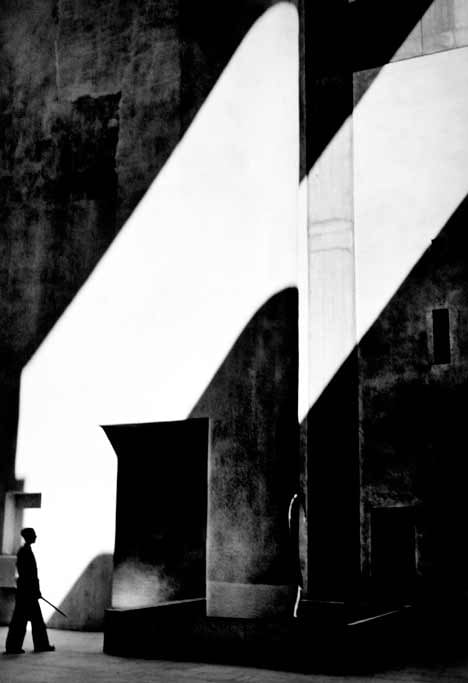 High Court of Justice, Chandigarh, Le Corbusier, photo by Lucien Herve, 1955. Source: Dezeen.
High Court of Justice, Chandigarh, Le Corbusier, photo by Lucien Herve, 1955. Source: Dezeen.
Le Corbusier, for example, partnered with photographer Lucien Hervé for two decades, with Hervé working in an almost cinematic way to express movement through a building, as can be seen in the example above.

TWA Terminal, Eero Saarinen, photo by Ezra Stoller. Source: Arch Daily
Ezra Stoller, another influential photographer, worked with major modernists from Walter Gropius to Paul Rudolph, amongst others. Often minimal and abstracted, Stoller rarely used people in the photographs, allowing the built work to stand in simplicity and independence. Stoller’s careful depiction on iconic buildings went on to define mid-century modernism.
In contrast to Stoller, Los Angeles-based Shulman often incorporated fashionable people enjoying a lifestyle staged to celebrate the prospects of a modern life. Shulman’s famous depiction of two women in Case Study House #22 (below) is perhaps the most important photo of modern residential architecture, promoting a care-free postwar lifestyle as the home floats above the extending grid of a night-time Los Angeles.
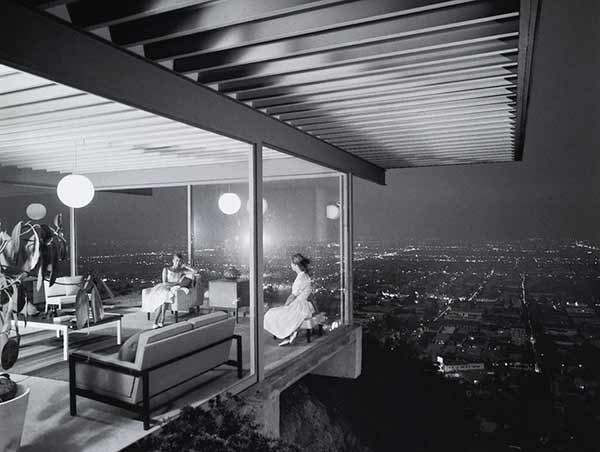
Case Study House #22, designed by Pierre Koenig, photo by Julius Shulman, 1959. Source: LA Magazine.
Becoming Modern: Digital Photography and Social Media
With technology and social media, today’s architectural photographers have changed the way they work which has, in turn, changed the way that he architecture they photograph is seen.
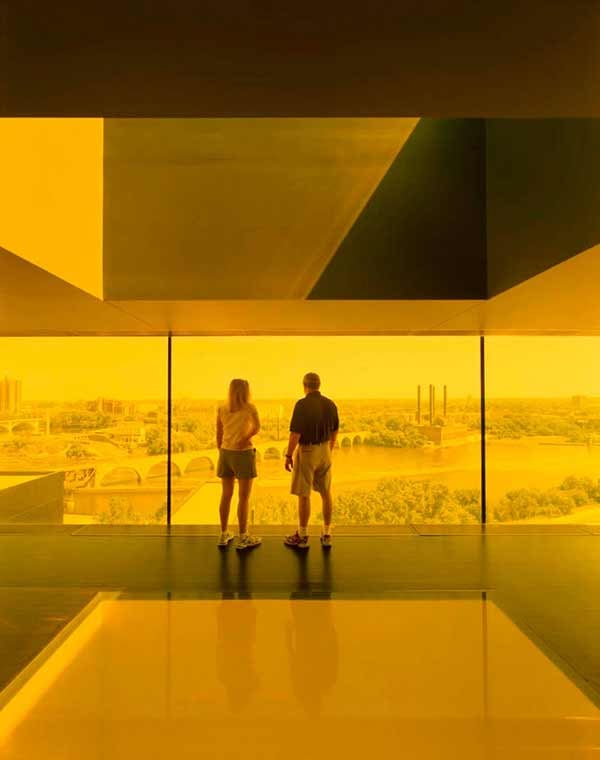
Guthrie Theater, Jean Nouvel, photo by Roland Halbe. Source: BMIAA.
Reflecting on the current state of photography, Roland Halbe told Architectural Record, “Now you correct the perspective post-production with Photoshop. The digital age has resulted in photographers’ being faster, less accurate, less profound. We all react to the striking, eye-catching photos, and lines are blurred between professionals and amateurs.”
Still, some photographers hold on to more traditional methods. Hélène Binet, who often photographs the cutting-edge buildings by Zaha Hadid, is one such example of a photographer known to continue to shoot on film despite advances in digital photography.
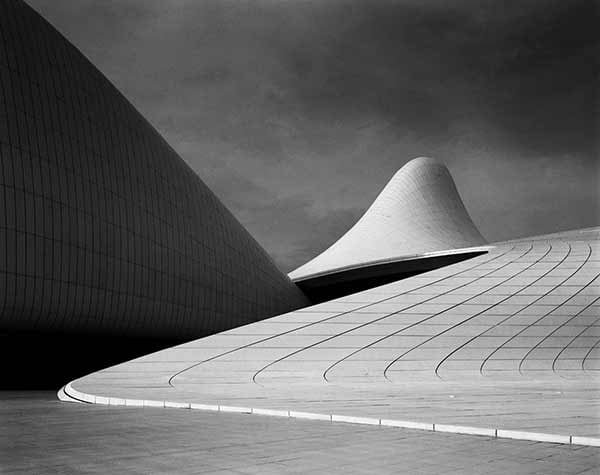 Heydar Aliyev Centre, Zaha Hadid Architects, photo by Hélène Binet. Source: Architectural Record.
Heydar Aliyev Centre, Zaha Hadid Architects, photo by Hélène Binet. Source: Architectural Record.
With another attitude, Iwan Baan famously incorporates people and doesn’t consider himself an architecture photographer. Instead, Baan focuses on showing how people live, allowing the buildings to stand as backgrounds to the stories.
 National Stadium Beijing, Herzog & de Meuron, photo by Iwaan Baan. Source: Bustler.
National Stadium Beijing, Herzog & de Meuron, photo by Iwaan Baan. Source: Bustler.
As one of the most influential current photographers, it isn’t surprising that Baan has a large Instagram following. Seamlessly integrating his smartphone and social media apps, Baan recently told Architectural Record that he “can’t wait for the day when the phone is all I need to carry.”
 Iwaan Baan’s Instagram. Source: @iwannbann
Iwaan Baan’s Instagram. Source: @iwannbann
The ubiquitous use of smart phones with built-in complex cameras has changed photography, allowing many others to become image-makers.

Barnes Foundation – Tod Williams Billie Tsien Architects Partners. Photo by Stephen Hollinger. Source: @Stephan_Hollinger
As today’s professional photographers vary in method and attitude, the new class of amateur photographers can record a huge range of fresh perspectives spread across digital platforms. While the value of obsessively composed photos by professionals remain, the viewpoint captured by any person can now be just as influential thanks to various social media platforms (Instagram, Pinterest) as well as photo sharing sites like Flickr.

Written by Bryan Kim
Bryan Kim, RA is an architect and project manager at EYRC Architects. He has been involved in a variety of project types at the firm, ranging from educational campuses to creative office projects. Bringing a keen design eye and excellent communication skills, Bryan quickly becomes a favorite of EYRC clients.
